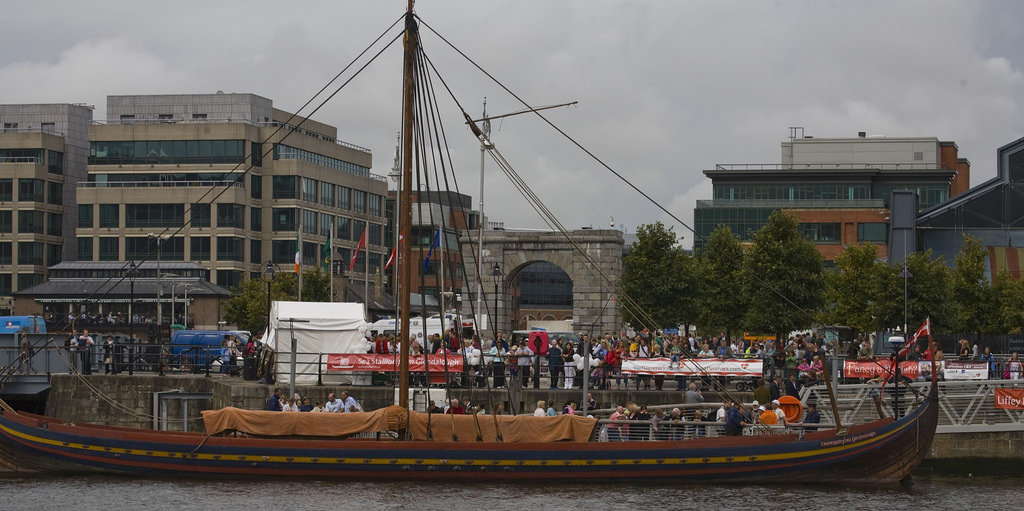
Ponder the extent of support needed to keep seagoing fleets of longships going to sea. Those state-of-the-art weapons needed maintenance and supplies.
Robert Ferguson suggests in The Vikings – A History that shipbuilding would have been a significant industry in many communities for the duration of the Viking age.
Think about the range of skills needed, as he mentions:
- forrester’s to select and fell just the right trees,
- carpenters to split those trees into planks,
- blacksmiths to make the massive number of nails and an anchor,
- sail-makers to weave and stitch those huge sails, and
- rope-makers to provide ropes to control those huge sails (check out the rigging in the above photo).
Add to that list:
- master shipbuilder who knew how to put it all together,
- all the laborers to support all of the above, and
- farmers to raise the food to feed all of the above.
Several books I have read (won’t bother going back and finding the specific citations) indicated it would take a couple thousand nails or rivets to put all those planks together. That is a lot of mining, refining, forging, and hammering.
Those planks wouldn’t become watertight merely by driving a nail every foot or so. That means there was a lot of caulking used, which the book says was made of moss and tar. Someone else had to gather up all the moss and other ingredients, then cook up all the caulking, then apply it.
Mr. Ferguson says many of the recovered ships have shown signs of planks which had been repaired. Specialists would be needed to make those kinds of repairs.
Support bases, or longphorts
The book pointed out that the longphort bases in Ireland provided supporting infrastructure to repair ships and provision crews.
I’ll make an easy guess there were skilled craftsmen who made a decent living in the longphorts repairing damaged ships when they pulled in, providing replacement oars, patching sails or selling new ones, and selling new and spare rope. Leaky planks needed caulking and damaged ones needed replacement.
There were likely a number of merchants who would be able to sell (for an appropriately sized bag of silver) enough dried food, mead, and barrels for the next pillaging run.
I’ll also guess there were merchants who would buy surplus plundered weaponry, hold them as inventory, and sell the weapons to the next crew that was short a few swords, axes, or spears. A now wealthier raider might also upgrade from an axe to a sword.
The book specifically identifies Dublin, Limerick, Waterford, Wexford, and Wicklow as some of the more prominent permanent bases, or longphorts, used to provide ship support.
Book says the longphorts gradually grew from fortified ports into full-fledged towns.
Speaking of Dublin
The size of the raids in Ireland accelerated quickly. Book says that in 837 there were two separate fleets, each of 60 ships that arrived on adjacent rivers on the east side of Ireland. Author estimates that would have been around 3,000 or 4,000 raiders which would be on average 25 or 33 warriors per ship. Range of ship size would be from 12 to 15 pairs of oars.
By 848 the Norwegians, called Finngall, or fair foreigners had settled and were in control of Dublin. A raiding party of Danes, called Dubgall, or black foreigners, attacked Dublin, defeated the Norwegians, killing many, and taking their stuff.
The Norwegians returned in 852 with a fleet which the book says consisted of 160 ships. The Danes emerged victorious after a three-day fight at sea.
Let’s ponder that sea fight. Assume the Danes had a matching sized fleet of 160 ships. That’s 320 longships. At only 25 to 30 warriors per ship, that means there were somewhere in the range of 8,000 or 10,000 Vikings in the fight.